
Big or small, university athletics departments have many moving parts. Because of this, communication is of the utmost importance and, at the same time, challenging to harness and perfect. Implementing systems such as an athlete management system can support the many areas of an athletics department. A system like Kinduct enhances communication across the entire department while providing visibility to the variables surrounding each sport, team, and individual student-athlete.
Streamline Data Sources for the Entire Department
Currently you may find yourself in the position where each team or sport has different spreadsheets, data collection tools, and protocols. This can lead to time spent hunting down different pieces of information.
What an athlete management system can do is put all those spreadsheets in one place, standardize those data collection tools, ensure the same protocols are being followed. In other words, it gives staff – sports medicine, strength and conditioning, nutritionists, coaches, and athletes – a place to collaborate to push the limits of performance.
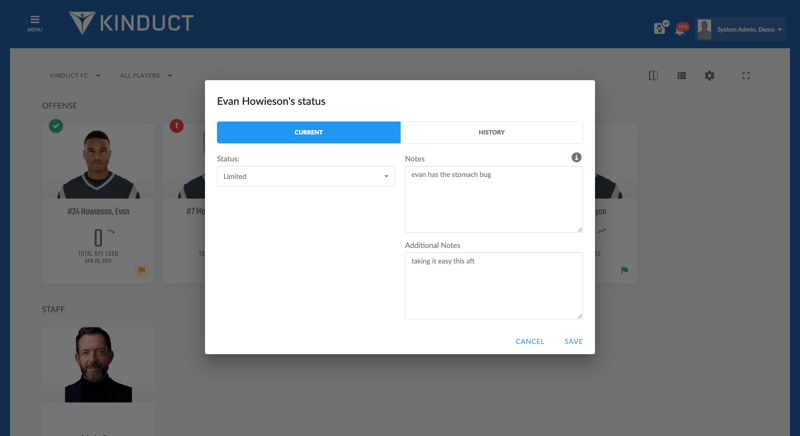
As Kevin Shultz, Director of Olympic Strength & Conditioning at the University of Wisconsin, put it: “The cross-departmental collaboration is at the crux of the system and what has allowed our program to become a championship level program over the past three seasons.”
The information that’s deemed important is in a single location.
Kevin says that within his department, Kinduct helps to inform sport coaches, technical coordinator, director of operations, and sports medicine professionals on what’s happening with student-athletes. Which, ultimately, helps improve practice development, rehabilitative strategies, and educational interventions.
Eliminate the Siloes Between Sports Teams
As mentioned above, a big reason an athlete management system can help athletic departments is by centralizing staff and athletes from multiple teams and sports under one “roof.”
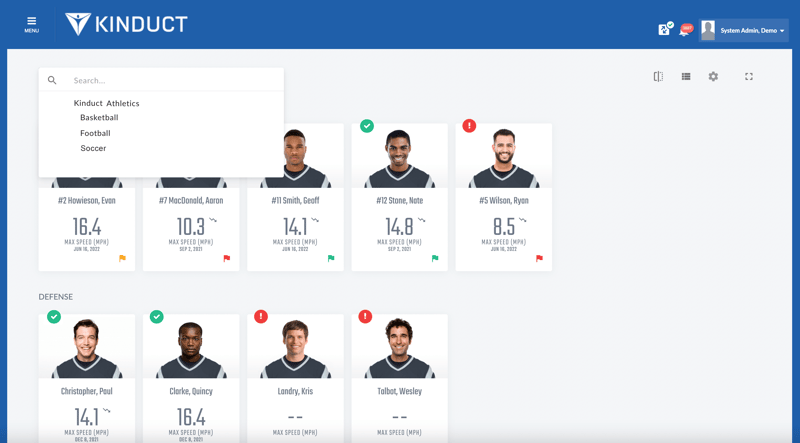
While setting up your system, certain staff members can be assigned different roles and access within the platform, where information can be stored and accessed based on your university’s specific needs.
For instance, if an interning strength coach works specifically with the swim team, when they log in, they will see a view that pertains only to the swim team. In another case, someone with a more directorial role can sign into Kinduct and oversee activity happening in multiple sports.
This ensures certain data is protected and work isn’t accidentally duplicated.
.
Navigating the Demands of a Student Athletes’ Schedule
As a staff – strength coaches, trainers, and sports scientists – you only have the student athletes under your care for a few hours each day. Student athletes have other demands and responsibilities, which begs the question: How are they spending the rest of their time?
The truest way to learn is through in-person dialogue. But when that isn’t an option, you can rely on other data collection tools that an athlete management system offers.
This could be a wellness questionnaire sent out a few times a week. Having these insights – maybe it’s sleep, stress, and mood – can help you tweak the duration or intensity of that day’s work out. It can also help flag more serious issues, such as an athlete who needs extra support around an off-field struggle. Issues like these can be flagged where, if a certain threshold is surpassed, staff members are notified to act.
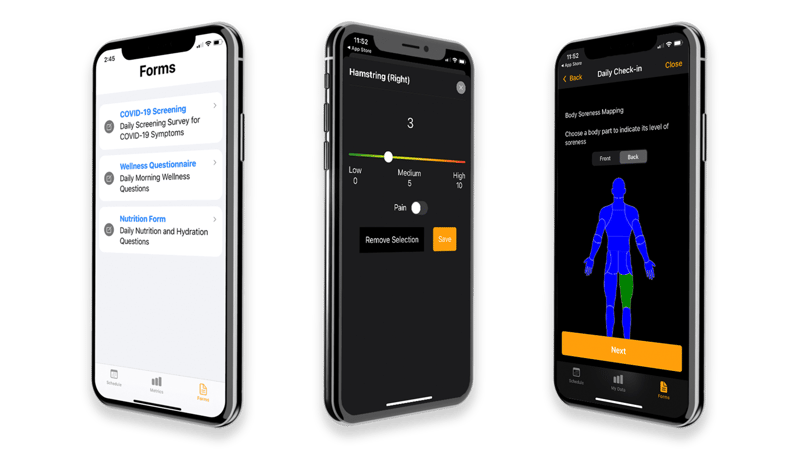
To revisit the Wisconsin example, Kevin keys in on the collective approach a system like Kinduct offers:
“These systems have allowed us to better understand the global demands we are placing upon our student-athletes. Having a strong pulse on the team and being able to catch the outliers has been helpful at reducing time lost to injury and enhancing performance on-court and within the strength and conditioning space.”
Injury Surveillance
Historically speaking, collegiate athletic departments have faced barriers when it comes to Electronic Medical Records (EMRs). These technologies are often siloed from the performance side of things, making cross examination and communication between medical and performance staff more difficult than it should be.
Implementing a system like Kinduct can eliminate many of those frictions. Kinduct’s sport specific EMR comes with built-in injury surveillance tools such as injury charting, treatment logging, athlete status notes/reports, and rehabilitation programming.
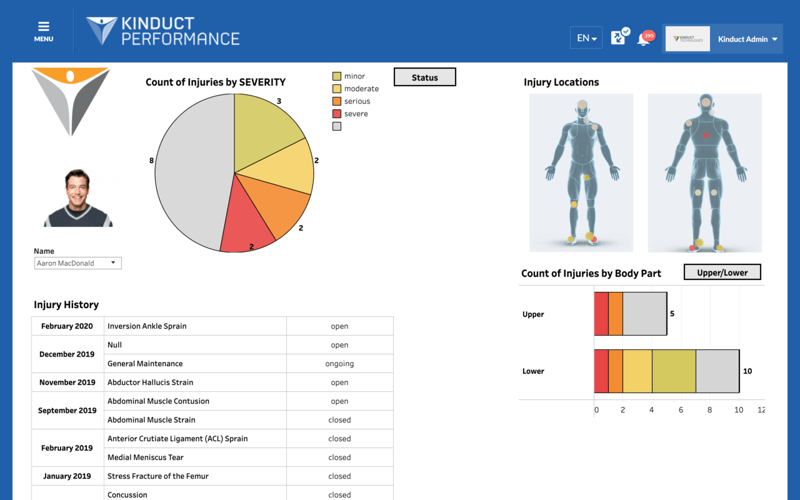
With insights such subjective wellness data, workload, and injury history in one platform, staff can act efficiently in their treatment and return-to-play protocols.
Recruiting
Recruiting is a huge part of collegiate sporting success. It’s a responsibility normally left to scouts and coaching staff, so how can an athlete management system help?
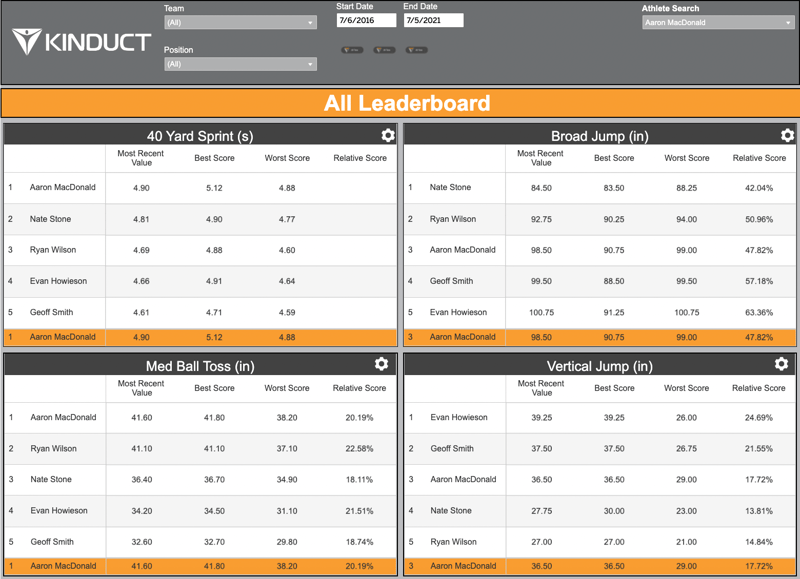
When data management strategies are streamlined and stored in a single platform, historical databases begin to grow. Not only is this a way for staff to evaluate themselves and their effectiveness, but sport coaches can also use the analysis to track student-athlete progression over time and prove to potential recruits that the program in place is working to take student-athletes to the next level.
One example could be a simple report that shows athletes’ vertical jump improvement since coming to the school. It’s little things like this that show recruits and their parents or guardians that your program is going the extra mile.
Security
The ability to support both medical and performance needs within a university’s athletic department is only possible through sound platform security. It’s something that athlete management systems take seriously. For instance, a platform like Kinduct is Privacy by Design certified as well as GDPR and HIPAA compliant.
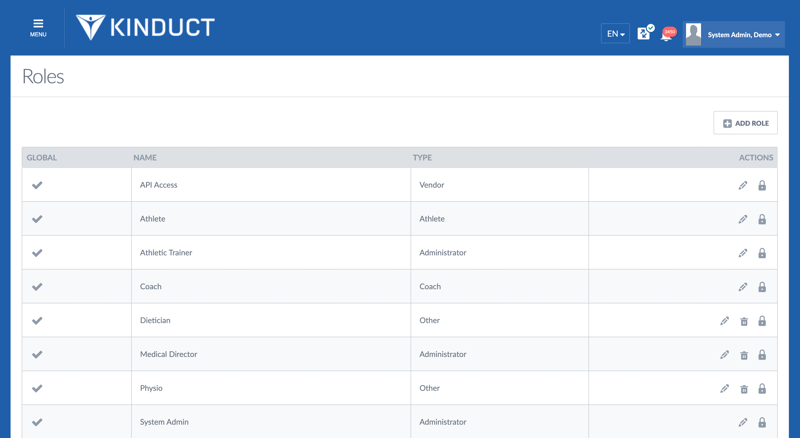
The Roles and Permissions function allows users to assign each person within the department access to the information their role requires. On the flip side, being able to restrict access to certain metrics such as sensitive medical information or mental health questionnaires protected.